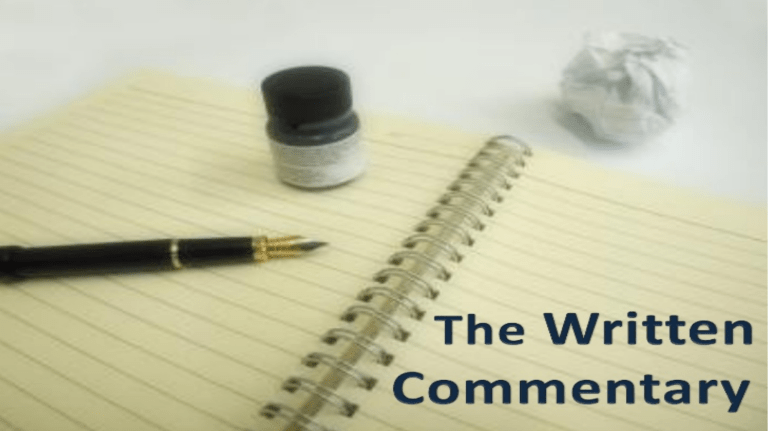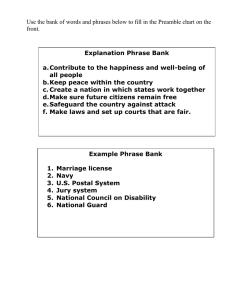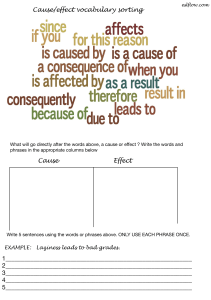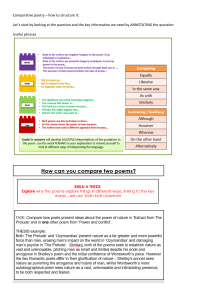
LEARNING OBJECTIVES ▪To be able to comprehend the contents of the passage. ▪To be able to annotate the passage. ▪To be able to identify the GRAPPS. ▪To be able to select words or phrases that justify the GRAPPS. WHAT ARE STYLE AND LANGUAGE ▪STYLE – style might be considered as everything that gives a particular text its unique and individual flavour. The ingredients that make up style will include : -FORM : the shape, organization and overall structure of the text. ▪LANGUAGE : the vocabulary, grammar, syntax, variety of sentences, choice of tone, register. ▪AUDIENCE: ▪CONTEXT OF THE TEXT : when, where and how it was produced. ( the background, setting, form or culture in which the text was KEY TERMS ▪Register : the type of language used for a particular purpose or in a particular setting. ▪Symbol : a word or phrase that can represent an idea For example, a dove represents peace. ▪Imagery : language that draws on visual depictions to suggest ideas visual, auditory, gustatory, olfactory, tactile, kinaesthetic imagery ▪Stream of consciousness : how words reflect the way in which a narrator’s or speaker’s mind is actually working at a given point. ▪Anaphora : a reference which depends on or connects back to a previous, related word or phrase. ▪Mood : atmosphere, feeling ▪List/ power of three/tripling : a sequence of three items, one after the other, often used to create a particular effect. ▪Repeated syntactical structures or patterning: the use of the same types or word or phrase order. ▪Inner thoughts: ideas in the mind of the narrator or character ▪Parallel structure : words and phrases that are similar in length and order ▪Extended image: a comparison of two things which is returned to throughout the text. HOW TO APPROACH PASSAGE-BASED QUESTIONS? ▪ DO -read the text at least twice - List or highlight key words and phrases from the text before you begin to write - Start your commentary with a clear, brief introduction in which you offer an overview or framework for your interpretation of the set passage. - Focus on what the writer does (the techniques he or she uses) and the features presented. - Describe the effects of those techniques and features on the reader - Support what you say with well-chosen, selective evidence and apt quotation. - Write in a coherent, fluent way which links rather than lists ideas. - Keep your focus on form, structure and language. - Check your work and tweak it carefully to ensure that expression is succinct, yet sufficiently detailed. ▪DON’T -start writing before you have read the text carefully -Simply list or highlight everything in the text – be selective -Assert an idea or opinion without supporting evidence. -Simply feature spot – ( for example, mention that the writer has used an alliteration without saying what its effect is) -Just summarise what happens or paraphrase without offering any commentary or interpretation -List points or ideas in an unconnected way -Drift off into discussing aspects outside the question set







